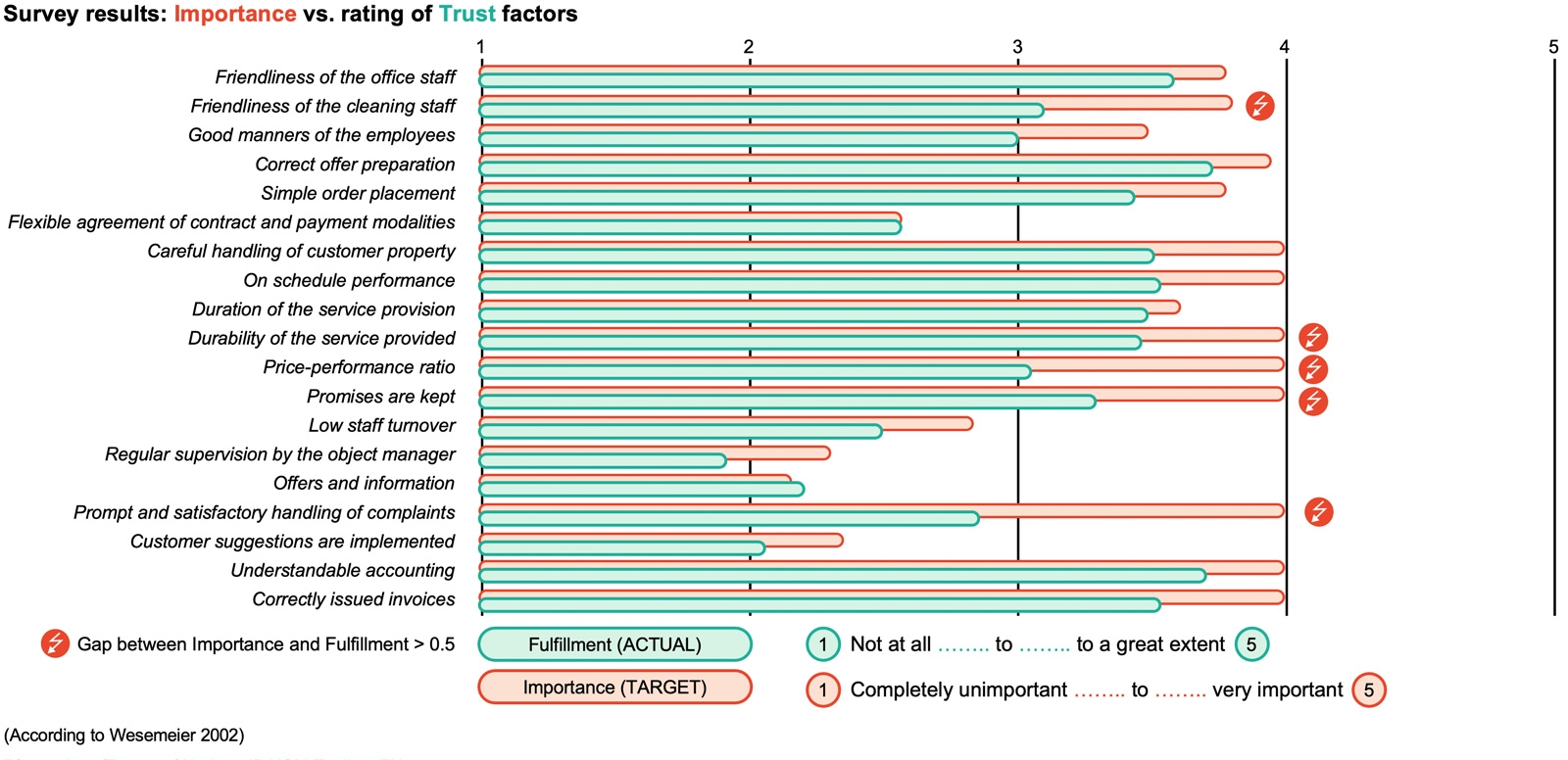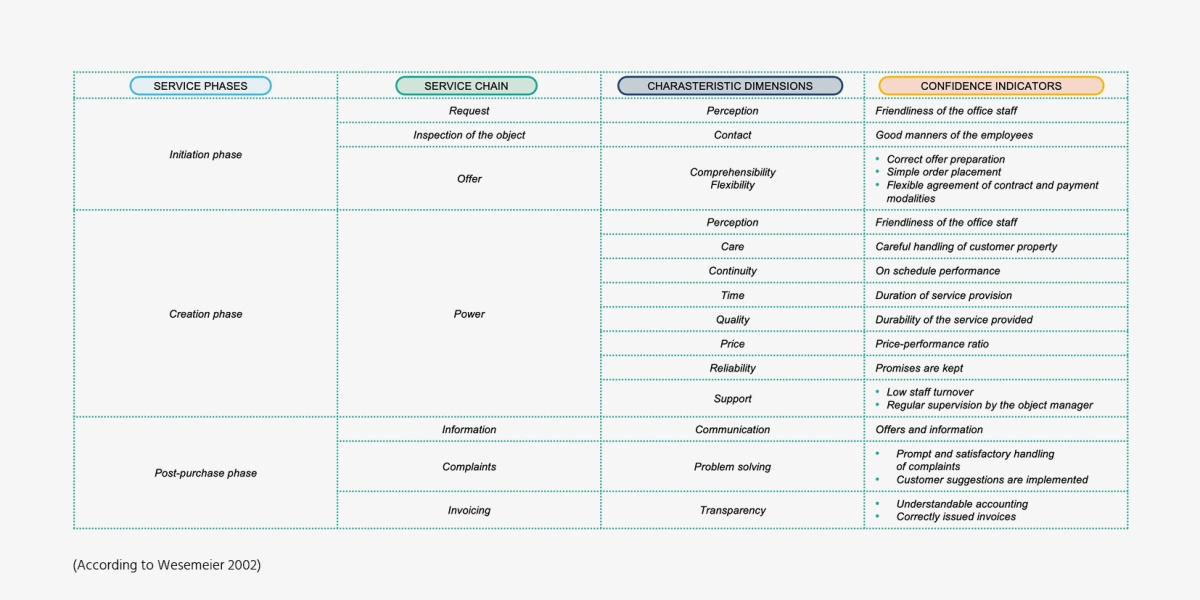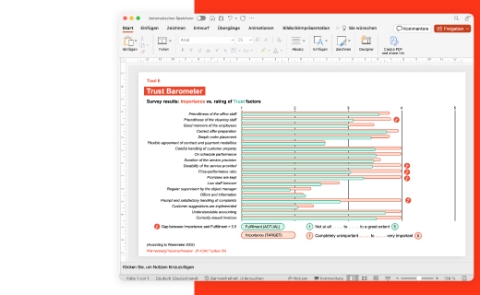Trust Barometer

Guiding question
How high is the trust of the stakeholders in the institution, e.g., in the company, in the management, in the brand?
Objectives
- Making trust in the institution measurable
- Recognize scope for action through stakeholder trust in the institution/management
- Identify the positive factors for and threats to stakeholder trust
- Define requirements for the communication strategy with regard to the goal of trust
Implementation
The attribution of trust is one of the success factors of communication for which there is no direct measurement instrument, such as via the question: "Do you trust XX"? Rather, asking this question leads to a negative bias; it tends to arouse distrust. Accordingly, the concepts for surveys of trust are based on multivariate approaches. That is, the level of trust is indirectly questioned about the factors that lead to the formation of trust. Essentially, two survey steps and an index formation are connected in sequence (cf. Wesemeier 2002):
- It starts with a survey on the importance (relevance) of the performance or behavioral factors that lead to trust. This leads to a weighted catalog of drivers of trust among the stakeholder group.
- For this weighted catalog, stakeholder ratings of the trust factors are determined in a (usually second) round of interviews.
- These weighted trust factor scores can be condensed into a trust index.
This is how the trust survey is conducted:
- In a preliminary study (pretest), e.g., via desk research on stakeholder interests, with focus groups or in a preliminary survey with a small number of participants, possibly relevant items of the survey are identified (longlist: the candidates for the trust-building factors). A list of possible trust factors emerges.
- On this basis, an initial model is created with the performance and behavior areas and – assigned to these – the possible factors for trust.
- In a first round of questioning, the relevance of the trust-building factors from the longlist is determined for the stakeholders. The result is a weighted list of confidence-building factors (shortlist). The model will be further developed accordingly.
- A second round of interviews is conducted to determine stakeholder ratings of the trust factors for the institution.
- In the evaluation, importance of trust factors and ratings are directly contrasted.
A trust index for the stakeholder group is formed via the weightings of the trust factors. If several of these surveys are conducted with similar stakeholder groups, the index is benchmarkable.
Theory: Trust
Trust presupposes two actors between whom there is an asymmetric distribution of information. Therefore, trust is always a "risky investment" (Luhmann 1973/1979). Trust represents a high level of capital for the trust recipient, as it reduces transaction costs (cf. Hubig 2014).
In the postmodern "risk society" (Beck 1986), trust is a crucial way to deal with the risks of not knowing. People are exposed to dangers whose extent and probability of occurrence they do not know. Instead of a rational risk calculation based on objective or subjective probabilities, there is uncertainty about possible probabilities of occurrence (cf. Hubig 2014).
Trust stabilizes behavior even in the event of inconsistencies in the other party's behavior or communication that would otherwise lead to doubt or disappointment. In this respect, trust has threshold character: It establishes “an artificial discontinuity that levels out the area of experience before and after the threshold, and thus makes for simplification" (Luhmann 1973/1979). Trust "stabilizes in the course of successful trust assignments up to reputation [...], which then makes preliminary decisions of trust assignment superfluous or replaces them with calculated expectations." (Hubig 2014).
An internationally conducted trust barometer that has captured trust in key societal institutions-government, business, media, and NGOs since 2001 is the Edelman Trust Barometer (Edelman 2018). Here, the importance of trust in institutions is highlighted: "In modern society, we delegate important aspects of our well-being to the four institutions of business (economic well-being), government (national security and public policy), media (information and knowledge) and NGOs (social causes and issues). In order to feel safe delegating important aspects of our lives and well-being to others, we need to trust them to act with integrity and with our best interests in mind. [...] If trust in these institutions diminishes, we begin to fear that we are no longer in safe, reliable hands. Without trust, the fabric of society can unravel to the detriment of all." (Edelman 2018)

